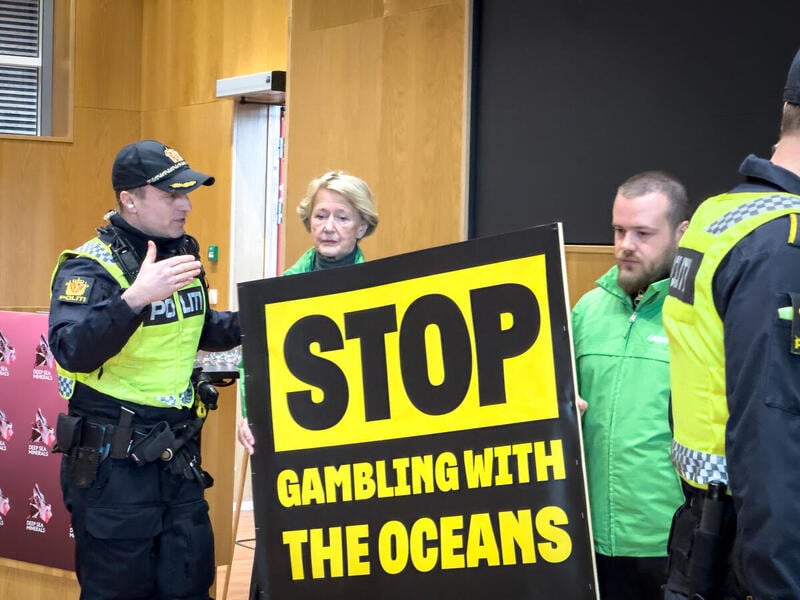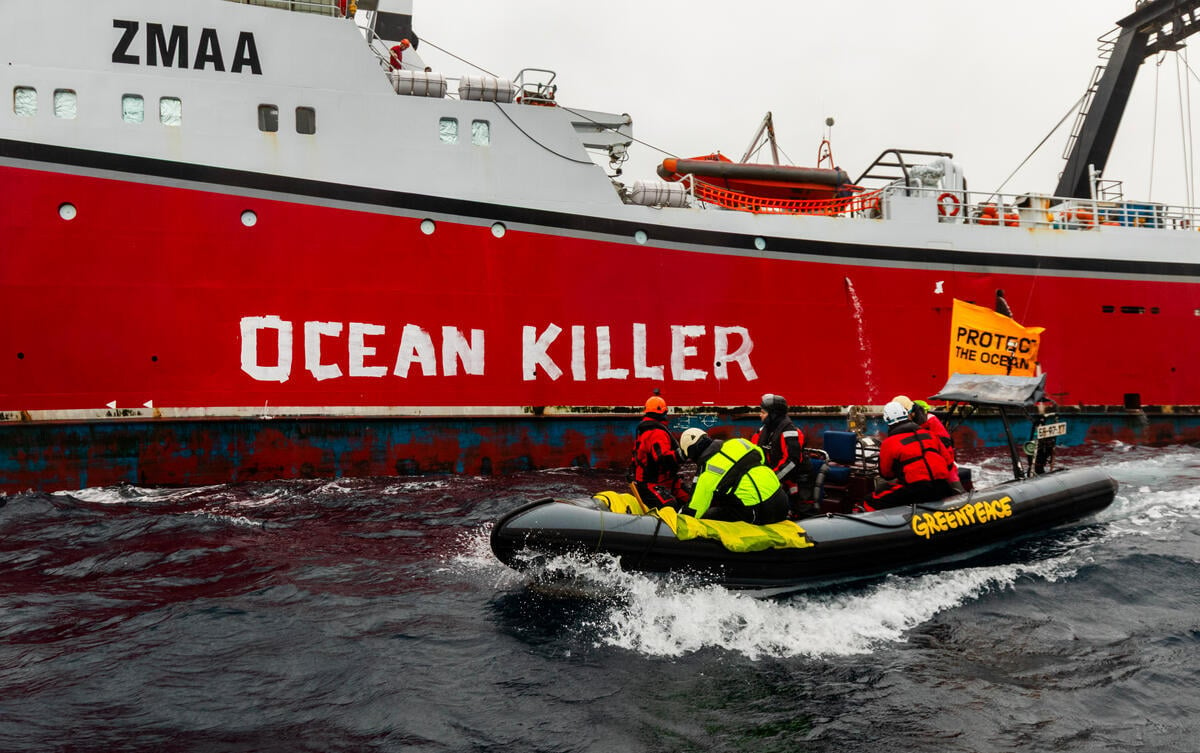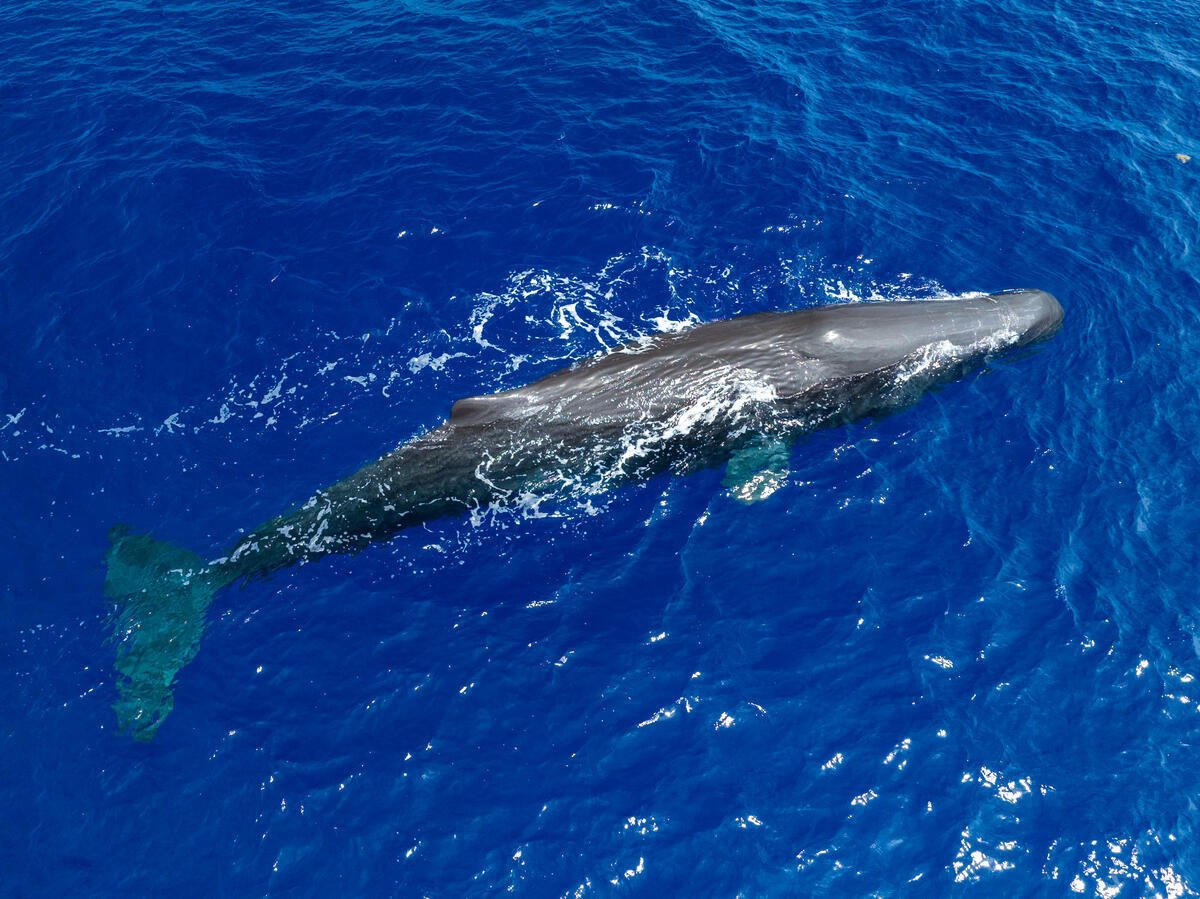One of the defining symbols of Greenpeace is our ships. The ability to reach areas of the world that are inaccessible to others is what allows this global movement to tackle environmental malfeasance head-on, wherever it takes place.
That’s why, for the past few weeks, the Esperanza has hunted reckless fishing vessels in the Indian Ocean, going straight to the heart of where the industry doesn’t want us to – and where many can’t reach. In that time, we’ve hauled dozens of FADs (Fish Aggregating Devices) from the sea, sparing countless sharks and other bycatch from death in the nets of some of the fishing vessels supplying Thai Union. We’ve sent a message to their headquarters that people won’t stand for it.
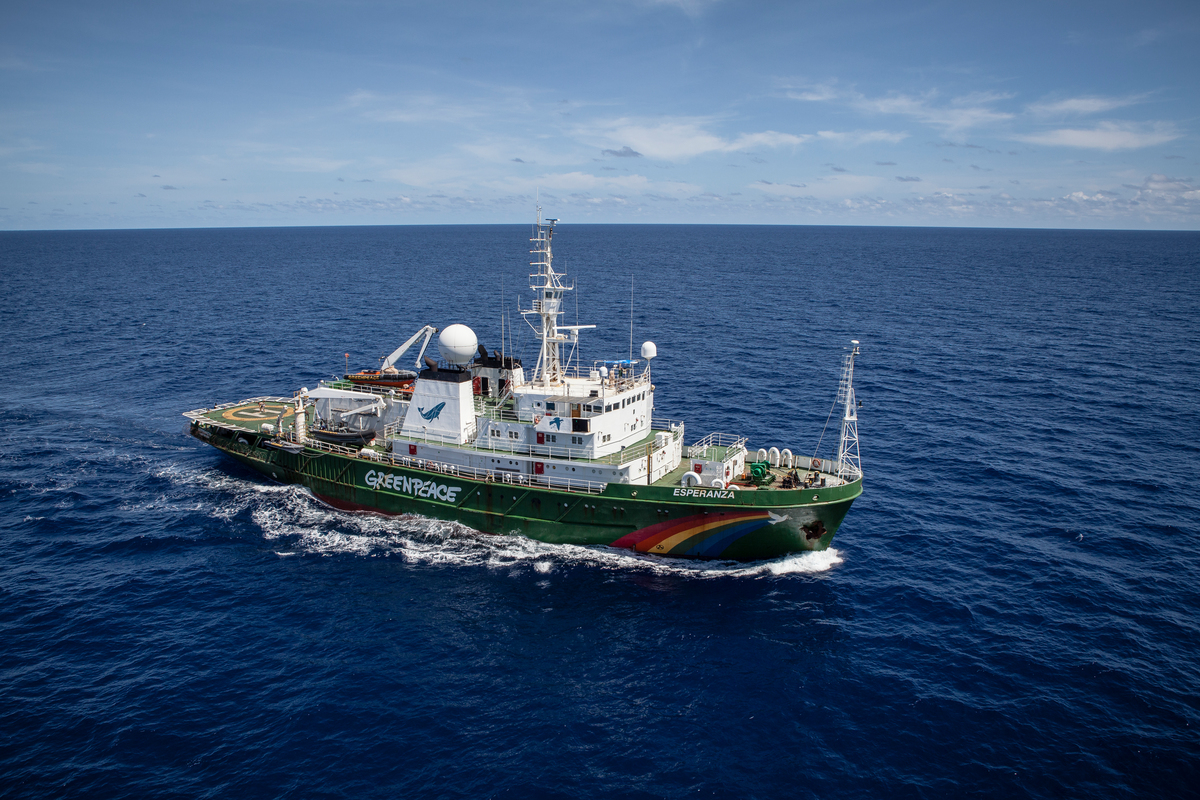
Aerial view of the Esperanza in the Indian Ocean
It’s not just the ability to sail the seas that enables us to do this. The Indian Ocean stretches for over 10,000 km from East to West, covering well over 70 million sq km and more than one fifth of the world’s ocean area. (Short version: it’s big.) Scouring an area this size for the visible beacons (about the size of a shoebox) can be like hunting for a needle in a haystack – or it would be if you didn’t have the right tools.
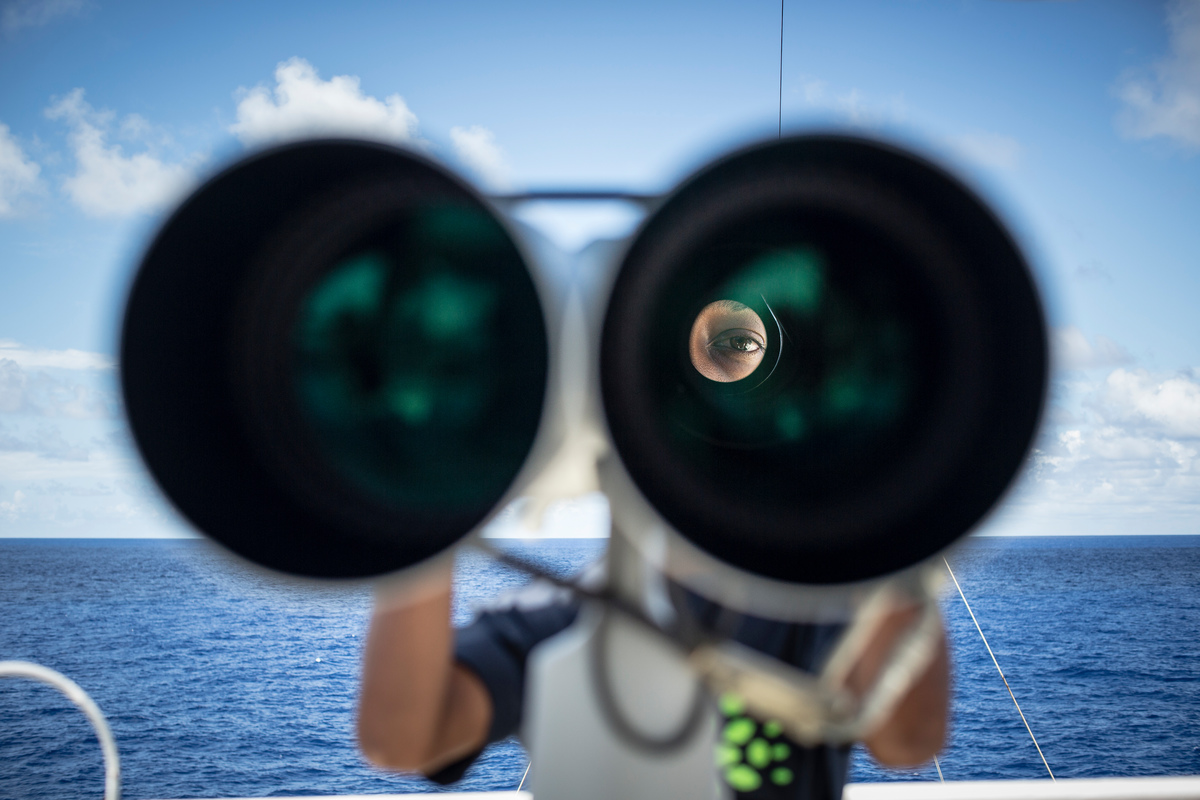
Greenpeace crew member looking through binoculars during his FAD (fish aggregation device) watch on the ship’s monkey island
Fortunately, the Esperanza is also equipped with cutting-edge surveillance technology. On board there are solar-powered UAVs (Unmanned Aerial Vehicles) with a range of 100 km and the ability to photograph a 10 sq km area, an underwater ROV (Remotely Operated Vehicle) for monitoring and some of the most powerful and sophisticated marine binoculars out there. With these tools we’re making it harder and harder for unscrupulous fishing vessels supplying Thai Union to hide their destructive practices.
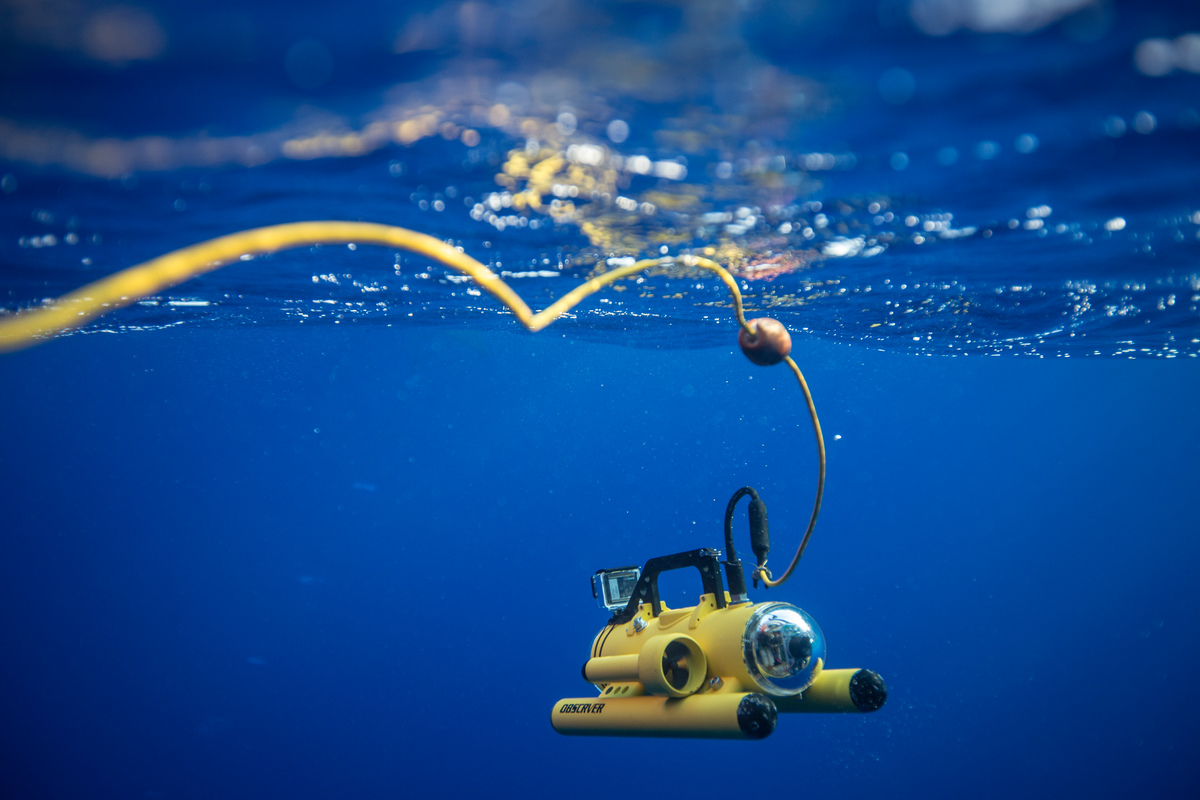
ROV dispatched to inspect a FAD in the Indian Ocean
Meanwhile, with the ship’s crew locating and retrieving FADs by the bucketload every day, storage and upcycling are also vital. The buoys and nets are – as the fish stocks of these industrially plundered seas should be – returned to artisanal local fishermen in coastal communities. The remaining components in the beacons are repurposed by tinkering crew members as solar-powered lamps and phone chargers.
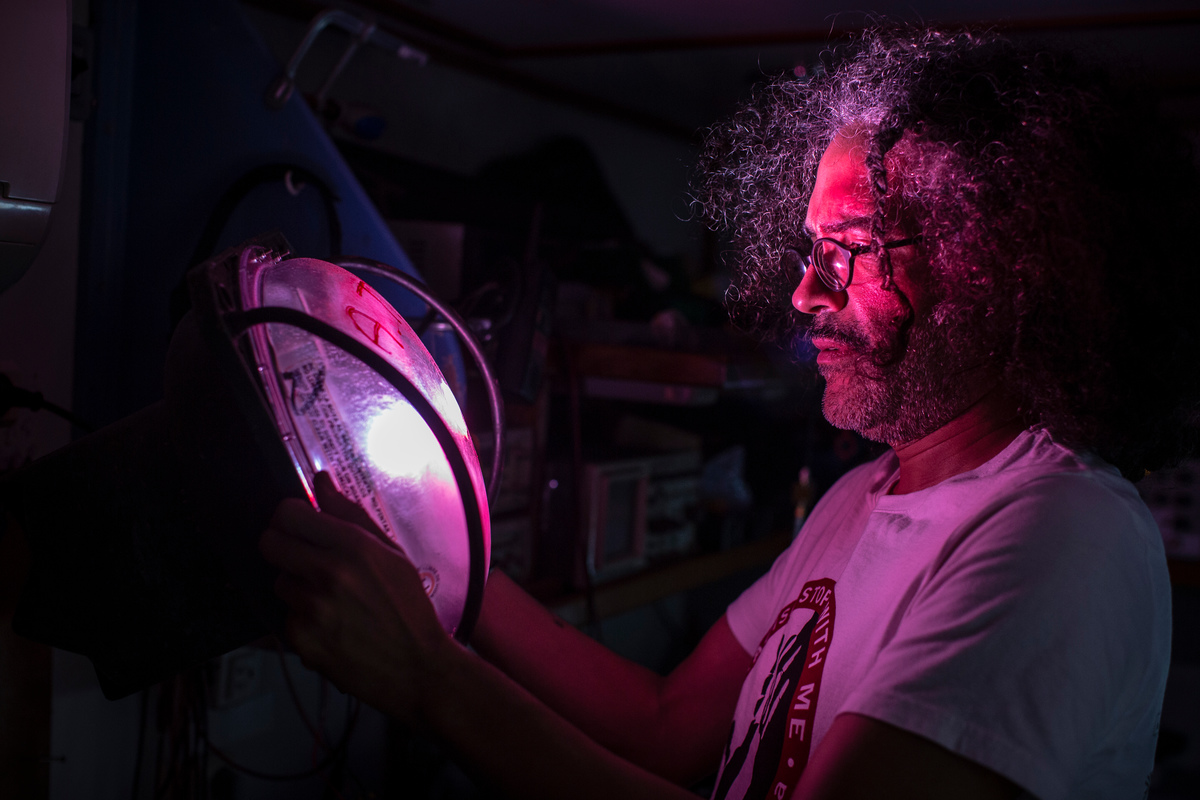
Esperanza crew creating lamp from reconstructed FAD beacon
If that all sounds impressive, you ain’t seen nothing yet. As if challenging Thai Union’s reckless practices at sea wasn’t enough, the company has more problems waiting for it on land. Where Thai Union FADs hide under the surface, we’re ramping up the hunt. Where Thai Union’s destructive supply chain goes from sea to shelf, we’ll be waiting.
The wave against Thai Union is rumbling out at sea and it’s about to crash onto land.
Tom Lowe is Multimedia Editor for the Communicaitons Hub at Greenpeace International, on board the Esperanza.

